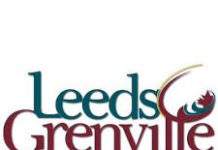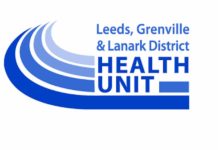by Danielle Labonte
Registered Dietitian and Public Health Nutritionist
Nutritious Food Basket costing and food insecurity locally
Each year the Leeds, Grenville & Lanark District Health Unit conducts Nutritious Food Basket costing. This means we look at the cost of a variety of nutritious foods across several grocery stores in Leeds, Grenville, and Lanark, and determine the average cost of eating a balanced diet for those living in the tri-county. This includes foods found on Canada’s food guide such as milk, fortified soy beverage, cheese, yogurt, hummus, canned beans, dried lentils, ground turkey, pork chops, a variety of fresh, canned, and frozen vegetables and fruit, whole wheat pita, oats, whole wheat pasta, brown rice, and peanut butter. The results show that after paying rent, bills, and other living expenses, individuals and households living with food insecurity struggle to buy enough nutritious food.
Household and individual food insecurity means not having enough money to buy enough nutritious food. This is an income issue, not a food issue. When money is tight, there is often less money in the budget for food. This can lead to skipped meals, poor mental, physical, and oral health. It also puts individuals at a greater risk of developing chronic diseases. Living with food insecurity means not getting enough of the vitamins, minerals, and energy from food that we need for healthy growth and development, and to maintain our health. Food insecurity is a serious public health problem as health and well-being are tightly linked to household food security. Addressing food insecurity will likely also decrease use of the health care system.
Nutritious Food Basket findings for our area
Through our annual Nutritious Food Basket costing, we found that the average monthly cost to eat a balanced diet in LGL for a family of four consisting of two adults (1 male and 1 female each between 31 and 50 years), a female aged 4-8, and a male aged 14-18 was $1130 in June of 2023. For a household with a monthly income of $2800, minus their rent, which is an average of $1583 in LGL, they have $1217 for everything else, before accounting for the cost of food. After subtracting the average cost of food, which is $1130, they are left with $87 for all other expenses, including hydro, transportation, insurance, basic phone and internet, childcare, clothing and footwear, household supplies, toiletries, over-the-counter medications, extracurricular activities for children, minimal recreation and entertainment, and school supplies.
This shows that people experiencing food insecurity do not have enough income to afford nutritious food, rent, and other essential living expenses. Solutions to address food insecurity require critical conversations with family, friends, colleagues, communities, and policy makers to get at the root problem of food insecurity: inadequate income.
To support those living with food insecurity, we can:
- support and expand tax filing initiatives targeted at low-income households,
- ensure access to safe, affordable housing, childcare and transportation,
- implement basic minimum employment standards to reduce precarious employment,
- increase opportunities for education,
- encourage local businesses and agencies to become Living Wage employers, and
- advocate for sufficient social assistance rates and minimum wage that will provide for the basic costs of living.
Donating Safe and Nutritious Food
We acknowledge that there is an immediate need to assist those unable to afford food, so we should consider both good nutrition and food safety when donating food for a short-term solution. When donating foods, choose nutritious food. Try using the % Daily Value (% DV) found on the Nutrition Facts Table to compare products. Look for products that have 5% DV or less of sodium and total fat and 15% DV or more of fibre, potassium, calcium, and iron. If you choose to donate food, contact a food bank in your community to learn what products they need and what equipment they have to safely store fresh or frozen food. Food banks must follow food safety legislation and cannot accept the following food products:
- food with missing identifying labels
- severely dented cans
- foods damaged in floods or fires
- food that has been partially consumed or has signs of spoilage or contamination
- home canned food products (because of the risk of botulism from improper processing)
- wild game or uninspected meat
- unpasteurized milk products and juices
- food prepared at home or in uninspected kitchens
It is also important to note that expiry dates and best before dates are not the same. Expired foods cannot be accepted, but foods past their best before date can be as long as they are not more than one year past their best before date.
For more information, visit our health unit website at healthunit.org, give us a call at 1-800-660-5853, or connect with us on Facebook and X.







